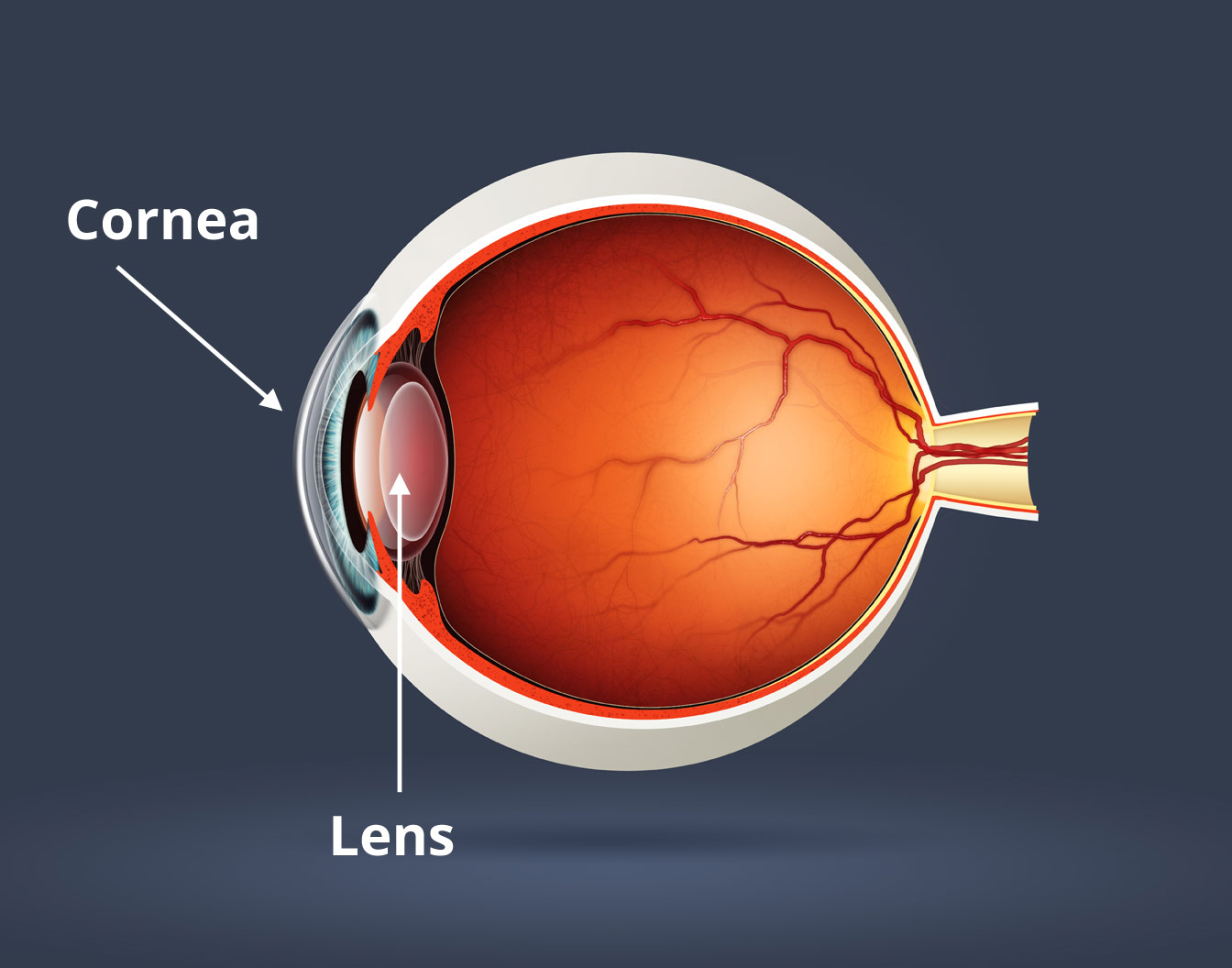Most everyone has some degree of astigmatism. And yet many people are confused as to what astigmatism actually is.
Vision problems such as nearsightedness and farsightedness fortunately have names that make them pretty easy to understand. But have you ever wondered what astigmatism is?
What It Means To Have Astigmatism
To understand astigmatism we must first understand the process of how we are able to see. Put simply, light enters the eye, passing through the cornea–the clear surface that covers the front of the eye. The cornea bends the light, and in conjunction with the lens, focuses it onto the retina at the back of the eye. Receptors on the retina send signals which are processed by the brain, allowing us to form an image of what we are seeing.
In a normal eye the cornea is round, shaped like a basketball, for example. In an eye with astigmatism, the cornea is oblong, shaped more like a football. Because of its irregular shape, an eye with astigmatism focuses light onto several different points at the back of the eye, instead of precisely onto the retina. This causes blurred vision at all distances.

Like other refractive errors such as myopia and hyperopia (near and farsightedness), astigmatism usually occurs because of genetics. In other cases, it can also be caused by trauma to the eye or a disorder called keratoconus.
Astigmatism Can Be Treated With Corrective Lenses
Despite its intimidating name, astigmatism is a fairly common vision problem. In fact, many of us have some level of astigmatism, but not severe enough to warrant corrective treatment.
Blurred vision, eye strain or headaches. While these symptoms don’t always mean you have astigmatism, they are common signs of an uncorrected vision problem. Astigmatism is easily detected during a routine, comprehensive eye exam.
If you have astigmatism, there are a wide range of treatment options available such as glasses, contact lenses and even vision correction procedures.
